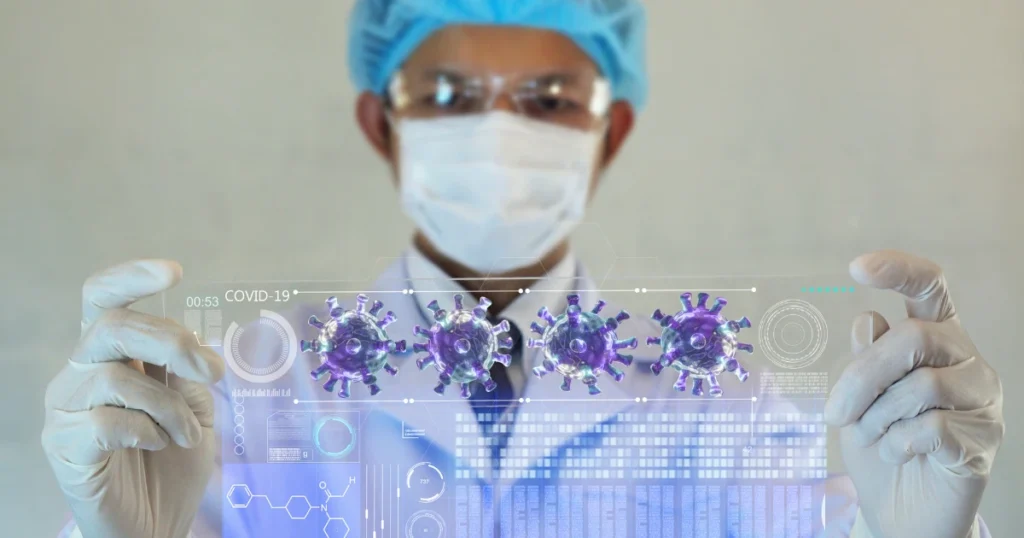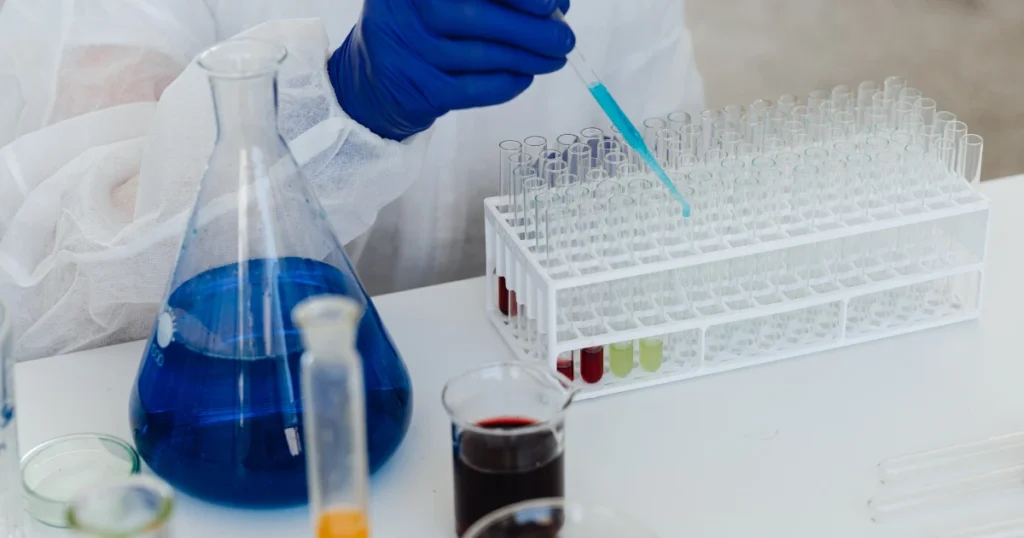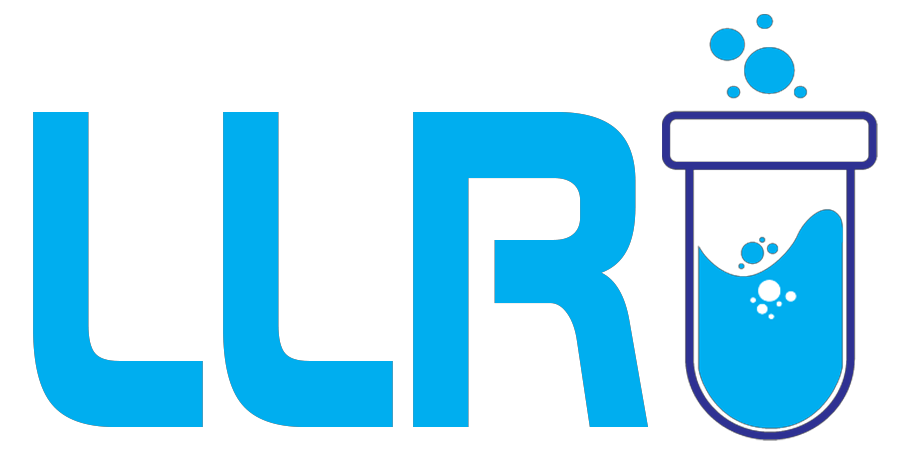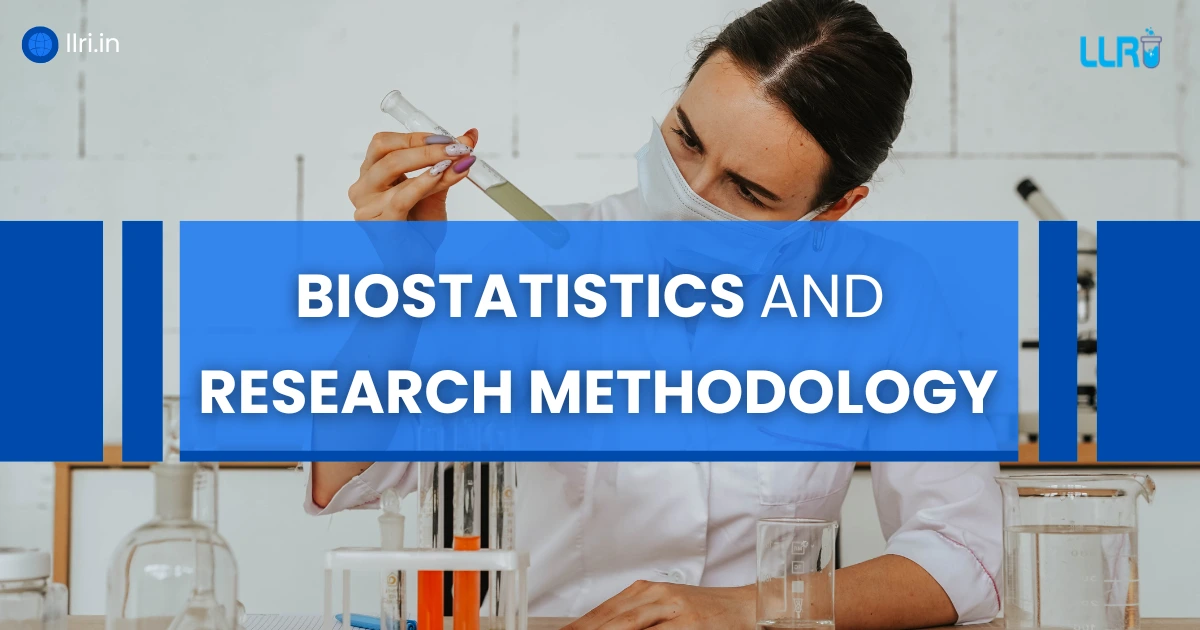Biostatistics and Research Methodology: Have you ever wondered how medical studies prove that a new drug works better than the old one? Or how public health researchers conclude that lifestyle changes improve life expectancy? The answer lies in biostatistics and research methodology.
This subject blend biology, statistics, and research techniques to interpret scientific data accurately. As Dr. R.A. Fisher, one of the fathers of modern statistics, often called the “Father of Modern Statistics” and “experimental design once said:
“To call in the statistician after the experiment is done may be no more than asking him to perform a post-mortem examination.”
We’ll also discuss the widely used textbook Biostatistics and Research Methodology by Dr. Akash Ved, designed according to the Pharmacy Council of India’s eighth semester syllabus for pharmacy students.
Biostatistics and Research Methodology
At its core, biostatistics and research methodology deals with two things:
- Biostatistics: The application of statistical tools to analyse biological and medical data.
- Research Methodology: The systematic process of conducting scientific investigations, from defining a problem to interpreting results.
Together, they help researchers validate hypotheses, test relationships, and draw meaningful conclusions. For example, when a new vaccine is introduced, researchers use biostatistics to analyse data from thousands of participants. The methodology ensures that the study design, data collection, and analysis are reliable.

Biostatistics and Research Methodology by Dr. Akash Ved
One of the primary references for pharmacy students is Biostatistics and Research Methodology, a textbook written by Dr. Akash Ved according to the Pharmacy Council of India (PCI) syllabus. This textbook is specifically designed for the eighth semester biostatistics course in Bachelor of Pharmacy (B.Pharm) programs.
The book includes:
- A table of contents covering core topics like introduction to statistics, biostatistics, frequency distributions, and measures of central tendency (mean, median, mode).
- Introductory chapters that provide clear definitions, worked examples, and step-by-step explanations to help students grasp statistical concepts.
- A focus on practical applications relevant to pharmaceutical research and healthcare.
Students often use this book alongside their biostatistics and research methodology notes for exam preparation and project work.
Essentials of Biostatistics and Research Methodology
Let’s break down the essentials of biostatistics and research methodology:
- Study Design: Learning how to design an experiment or observational study, including sampling methods and control groups.
- Data Collection: Gathering accurate and reliable data from populations or experiments.
- Descriptive Statistics: Summarising data using measures like mean, median, mode, and standard deviation.
- Inferential Statistics: Drawing conclusions from sample data using tests like t-tests, chi-square, and ANOVA.
- Research Ethics: Following ethical guidelines in collecting and reporting data.
- Reporting and Interpretation: Presenting results in a clear and unbiased manner.
These essentials form the backbone of medical and clinical research and are part of the biostatistics and research methodology syllabus taught across Indian universities.
The Biostatistics and Research Methodology Syllabus
Every course in this subject follows a structured approach. A typical biostatistics and research methodology syllabus covers:
- Introduction to Biostatistics: Definitions, types of data, data representation.
- Data Summarisation: Frequency distributions, graphical representation, measures of central tendency.
- Probability and Sampling: Concepts of probability, random sampling, and errors in sampling.
- Statistical Tests: t-test, chi-square test, correlation, regression, and ANOVA.
- Research Methodology: Steps in research, types of research (qualitative and quantitative), hypothesis formulation, and literature review.
- Data Analysis Tools: Using software like SPSS, R, or Excel for analysis.
- Ethics and Publication: Maintaining integrity in data reporting and writing research papers.
In medical and public health education, students often refer to biostatistics and research methodology notes that simplify these topics with formulas, charts, and examples.

Why Biostatistics and Research Methodology Matters in Modern Research
Scientific advancements depend heavily on accurate data interpretation. A poorly designed study can lead to wrong conclusions, wasting years of effort and resources.
Here’s why mastering biostatistics and research methodology is so important:
- It helps in making evidence-based decisions in healthcare.
- It provides tools to test hypotheses and validate results.
- It teaches how to interpret clinical data accurately.
- It improves research quality, reproducibility, and credibility.
A quote from a research (2022) highlighted that, “Nearly 85% of medical research waste can be avoided with proper study design and statistical analysis.” That’s the power of learning this subject well!
Making Sense of Data: Biostatistics in Action
Now ;et’s make it practical. Imagine you’re studying the effect of a new diet on blood pressure. Here’s how biostatistics and research methodology helps you:
- Define the Problem: Does the new diet reduce blood pressure compared to a standard diet?
- Choose the Study Design: Randomised controlled trial or observational study.
- Collect Data: Measure participants’ blood pressure before and after.
- Analyse the Data: Use paired t-tests to compare averages.
- Interpret Results: Conclude if the new diet has a statistically significant effect.
This simple framework, often explained in biostatistics and research methodology notes, makes research logical and structured.
Common Statistical Tools Used in Biostatistics
Some of the most frequently used tools and techniques include:
- Mean, Median, Mode – Basic measures of central tendency.
- Standard Deviation and Variance – Understanding data spread.
- Correlation and Regression – Studying relationships between variables.
- t-Test and Chi-square Test – Testing hypotheses.
- ANOVA (Analysis of Variance) – Comparing multiple groups.
Learning these is an important part of the essentials of biostatistics and research methodology.
Research Methodology: The Scientific Way of Thinking
Research methodology is about how research is done. It guides you from idea to conclusion. The process usually includes:
- Identifying a problem.
- Reviewing existing literature.
- Formulating a hypothesis.
- Designing a study.
- Collecting and analysing data.
- Reporting results.
In Indian universities, these steps form an integral part of the biostatistics and research methodology syllabus, preparing students to conduct independent research.
Read More: ORS Banned in India: FSSAI Action Explained | Is ORS Banned or Not?
Tips for Students Studying Biostatistics and Research Methodology
Here are some practical tips to make learning easier:
- Learn the concepts first: Don’t just memorise formulas; understand what they mean.
- Use real examples: Apply statistical tools to real or simulated data.
- Make good notes: Maintain clear and structured biostatistics and research methodology notes for quick revision.
- Discuss with peers: Group discussions can help clarify doubts.
- Practise with software: Learn tools like SPSS or R early on.
In India, biostatistics and research methodology has become a mandatory part of courses in medicine, pharmacy, nursing, and public health. With growing emphasis on evidence-based practice, every professional needs to understand data. The National Medical Commission (NMC), which replaced the Medical Council of India (MCI), made this requirement with the intention to improve the quality of research in medical colleges.
Courses now integrate practical projects, mini-dissertations, and workshops. Students pursuing MBBS, BDS, and MSc degrees often refer to updated biostatistics and research methodology notes for preparing for university exams and research work.

On A Final Note…
Learning biostatistics and research methodology is not just for passing exams, it’s about developing a scientific mindset. It helps you question data, validate assumptions, and draw meaningful conclusions.
If you’re pursuing studies in medicine, pharmacy, or allied sciences, spend time understanding the essentials of biostatistics and research methodology, keep updated biostatistics and research methodology notes, and refer to your syllabus frequently.
As the saying goes, “Without data, you’re just another person with an opinion.” In research, that couldn’t be truer.
FAQ
Q1. What is the purpose of studying biostatistics and research methodology?
It helps students and researchers analyse medical data, design studies, and interpret results scientifically.
Q2. How do I prepare for exams in this subject?
Focus on understanding formulas, practising calculations, and revising from reliable biostatistics and research methodology notes.
Q3. What careers can benefit from this knowledge?
Doctors, pharmacists, public health officers, data analysts, and researchers in life sciences.
Q4. Where can I find the syllabus?
Most universities publish the biostatistics and research methodology syllabus on their official websites.

